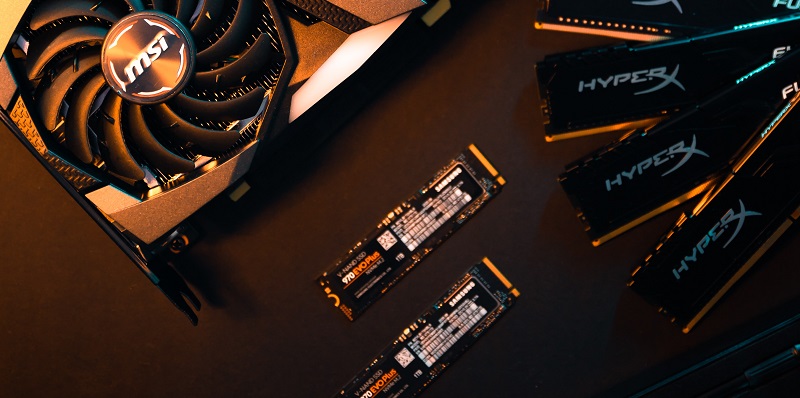In today’s interconnected world, telecommunication networks play a vital role in enabling seamless communication and access to information. At the forefront of technological innovation stands the U.S. hardware industry, which has been instrumental in developing the hardware necessary for the evolution of these networks. This article explores the pivotal role of the U.S. hardware industry in driving advancements in telecommunication networks and shaping the future of telecommunications.
The Role of the U.S. Hardware Industry in Telecommunication Networks
The hardware provided by U.S. companies has been pivotal in ensuring faster and more reliable communication. These technological advancements have facilitated real-time data transmission, allowing people across the globe to connect with one another seamlessly. Through their innovative hardware solutions, U.S. companies have revolutionized how individuals and businesses communicate. The U.S. hardware industry has been a driving force behind the continuous evolution of telecommunication networks. By developing cutting-edge technologies, U.S. companies have ensured that networks can handle increasing data traffic and provide enhanced connectivity. The hardware industry’s technological advancements have paved the way for the integration of new technologies, such as the Internet of Things (IoT) and augmented reality, into telecommunications systems.
Facilitating the Advent of 5G Technology
The hardware developed by U.S. companies has played a significant role in the emergence of 5G technology. The development of 5G networks required sophisticated hardware components capable of handling higher frequencies and faster data transfer speeds. U.S. tech companies have invested heavily in research and development (R&D) to create the necessary hardware, making 5G technology a reality and setting the stage for unprecedented innovation in telecommunications.
Significance of Financial Investment in R&D
U.S. tech companies invest billions of dollars annually in R&D, fuelling the development of innovative hardware. This investment allows for the exploration of new technologies and the creation of more efficient and powerful hardware solutions. By constantly pushing boundaries, U.S. companies ensure that telecommunication networks continue to evolve and meet the increasing demands of users.
Developing Innovative Hardware
The substantial investment in R&D by U.S. tech companies leads to the creation of innovative hardware. This includes advancements in signal processing, antenna technologies, and network infrastructure components. Through continuous innovation, U.S. hardware companies redefine the possibilities of telecommunication networks and enable groundbreaking applications such as autonomous vehicles and smart cities.
Crucial Role in Establishing Network Standards
The US hardware industry plays a crucial role in setting standards for telecommunication networks. These standards ensure compatibility, interoperability, and uniformity across different hardware and software components. By driving and participating in standardization organizations, US companies shape the global telecommunications landscape and foster a collaborative environment for network development.
Contribution to Protocol and Standard Development
U.S. tech companies actively contribute to the development of protocols and standards that govern the operation of telecommunication networks. Through their expertise and experience, these companies establish best practices, cybersecurity protocols, and data privacy frameworks. Their involvement in standardization committees ensures that new hardware technologies align with industry requirements and user expectations.
Increased Complexity of Telecommunication Networks
As telecommunication networks become more complex, the pressure on the hardware industry intensifies. Hardware manufacturers must continuously innovate to keep up with the increasing demands for bandwidth, processing power, and connectivity. Meeting these challenges requires ongoing investment in R&D and collaboration within the industry.
Addressing Cybersecurity and Data Privacy
The hardware industry must confront challenges related to cybersecurity and data privacy. As networks become more interconnected, protecting both personal and commercial data from cyber threats becomes paramount. U.S. companies dedicate significant resources to ensuring the security and integrity of telecommunication networks, creating robust hardware solutions that address these concerns.
Continuous Innovation by U.S. Tech Companies
U.S. tech companies are instrumental in shaping the future of telecommunications through relentless innovation. They constantly push the boundaries of what is possible, developing and integrating emerging technologies into telecommunications hardware. By doing so, they drive advancements in communication, networking, and overall connectivity.
Commitment to Excellence
U.S. tech companies are committed to excellence in hardware development. Their pursuit of excellence ensures that telecommunication networks are reliable, efficient, and capable of meeting evolving user demands. By investing in R&D, embracing new technologies, and collaborating with industry stakeholders, U.S. companies continue to lead the way in shaping the future of telecommunications.
The U.S. hardware industry plays a crucial role in the continuous development of telecommunication networks, enabling faster and more reliable communication. Through substantial investments in R&D, U.S. tech companies drive innovation and develop cutting-edge hardware solutions. They set the standards for telecommunication networks, ensuring compatibility and uniformity across hardware and software components. However, the industry faces challenges, including the increasing complexity of networks and the need to address cybersecurity and data privacy concerns. Despite these challenges, U.S. companies are shaping the future of telecommunications through their commitment to excellence and continuous innovation. With their pioneering efforts, they are paving the way for a connected world that thrives on seamless communication and boundless possibilities.

